The bathhouse is an irreplaceable source of health improvement, where not only the body rests, but also the mental balance is restored. A constituent and main element in the arrangement of a bath room is a heating stove, on which the healing properties of steam depend. Only wood stoves can create the true spirit of the Russian bath.
A sauna stove, which was folded in accordance with all the norms and rules for laying stoves, will retain heat for a long time, evenly and smoothly warm up the room.
Features of wood stoves
A properly folded sauna stove has the following properties and features:
- long-term preservation of heat;
- uniform heating of the room;
- optimal indicators of temperature and humidity;
- firewood and its combustion products are not harmful to the environment.
In general, wood-burning sauna stoves are devices of a thermal nature, which are used to create and maintain the required temperature of both air, water and steam in the bath. High temperatures are achieved by heating the stones with wood. In some cases, stones are heated periodically. The furnace of such furnaces is produced in a black way. In the periodic mode, the heating of the bath stones is carried out before the bath procedures, and the final combustion takes place during the vaping.

A wood-burning stove for a bath is equally well suited for both small bath rooms and large-sized Russian baths. Wood-fired stoves can be made of metal or made of bricks. Metal wood stoves are very suitable for small and medium sized baths. In small steam rooms, no more than two people can steam at the same time, and the average steam room can accommodate up to five people.
In this case, the installation of a wood-burning stove in the bath is done so that it is possible to fill up the fuel from the dressing room. Indeed, for the combustion process, a large amount of oxygen is needed: each kilogram of firewood needs two cubic meters of air. And in the steam room, as they say, oxygen is worth its weight in gold. But if the conditions do not allow for the outlet of the blower and the firebox to the dressing room, it is important that the steam room is well ventilated.
Features of wood-burning stoves
Sauna wood stoves are of two types:
Continuous wood burning stoves.
They have a small wall thickness. A small number of stones are placed in them. The backfill is not directly exposed to open flames. A metal plate is placed between the flame and the stones. In this case, the stones are heated to a temperature of 350 degrees Celsius. The heating of such stoves can be performed when visiting a bath.
Wood-burning stove for a periodical heating bath.
Has a massive brickwork. A large amount of stone filling is placed in such a furnace. The stones are heated over an open fire. Bath stones, which are located in the lower part, are heated up to 1000 degrees Celsius, and the upper layer of stones has a temperature of 500 degrees Celsius. The heating of intermittent furnaces is carried out a few hours before visiting the bath; it is not allowed to heat during the steaming process.
Design features of wood-burning stoves
Depending on the type of use, wood-burning stoves are equipped with a portable, unbearable and universal firebox.
Wood-burning stoves for Russian baths, which have a universal firebox, can be located either in the stove array, or on the street, or in a separate room. The most economical heating design is wood-burning stoves, which have an unbearable firebox. If the firebox is mounted in a steam room, then it is necessary to install a protective screen that protects the bath elements and people from thermal radiation. The presence of a remote firebox requires insulation of the wall located near the firebox.
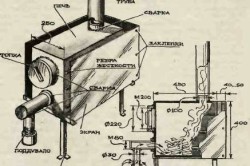
When using wood stoves, a chimney system, a supply of fuel material, garbage collection and ash cleaning are necessary.
A wood-burning stove for a Russian bath in its design must necessarily have a chimney, which is used to exit combustion products from the bath room. Currently, traditional chimneys from asbestos-cement pipes are used less and less. Most often, chimneys are made of ceramic materials, concrete, brick or metal.
Finnish wood stoves
Woodburning stoves of this type are distinguished by their durability, since all elements of these stoves are made of high quality stainless steel. Almost all Finnish wood-burning sauna stoves are equipped with glass doors, which makes it possible to observe the flame. Some models have a remote firebox that can be installed in the dressing room.
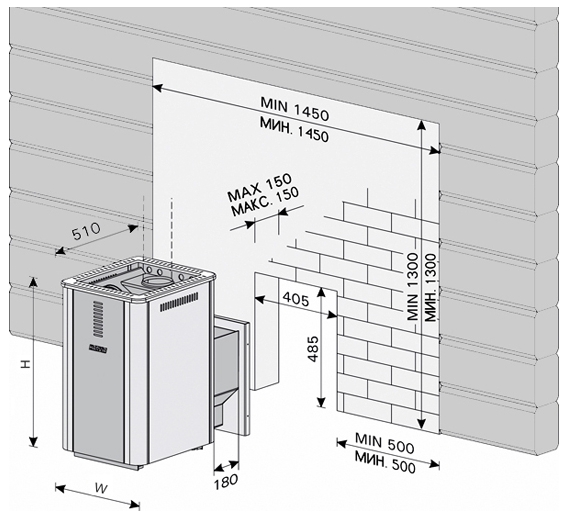
Finnish wood-burning stoves in their design have a special system that is responsible for the distribution of the air flow. This ensures the achievement optimal conditions for vaping. Such wood-burning stoves for a bath, the prices of which are relatively low, are characterized by low fuel consumption. In the Finnish series of wood-burning stoves, there is a model in which carbon dioxide emissions are reduced by 80%.
Finnish wood-burning sauna stoves suggest different placement of water tanks. The design features of some ovens allow the tank to be installed in a washing room. The stones can also be placed in different ways: at the top, in the middle, or in a circle.
Features of wood-burning stoves Barbarian
These ovens have different designs. For example, a wood-burning stove, which is equipped with an overhead water tank, is used in bath rooms with a water supply system. The water tank acts as a conduit through the ceiling surface. In this case, the presence of a sandbox for thermal insulation is not required. The pipe goes through the water tank and out onto the roof. These models are equipped with a stainless steel heating circuit. It circulates hot water and brings the water to a boil in 1 hour.
Wood-burning sauna stoves Varvara, in which the tank is located on the side, can be installed in saunas where there is no water supply. Such ovens are lightweight and easy to operate (due to uncomplicated plumbing units). The location of the tank can be either right-handed or left-handed.
Features of the firebox of wood-burning stoves
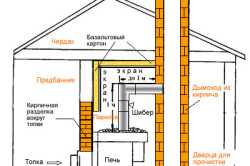
To create good conditions in the steam room, you can use the wood-burning stoves for the Teplodar bath. First of all, you need to fire up the sauna stove. This process involves firing up with dry, finely chopped wood. At this time, the chimney must be completely open. The ash pan also opens as much as possible. After the combustion of the starting fuel, firewood is laid.
Do not fill the firebox with wood more than two-thirds up from the grate.
The free space left after stacking the wood will ensure a more efficient and complete burning of the wood.
Wood-burning stoves for a bath, drawings of which can be found in special literature, suggest an interval lining of firewood. The time after which it is necessary to toss the logs is determined by the size of the firewood, the type of wood, humidity and draft that is inherent in a given stove. For example, the damper in the chimney can be opened halfway, and when the ash pan is shut off, leave a small gap of 2-3 cm. This will reduce the burning rate of firewood and increase the heat transfer to the bath stones. As a rule, put the logs in the stove after 20-30 minutes.
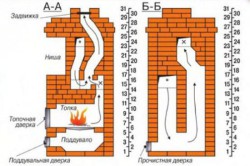
V ideal option in wood-burning cast-iron stoves for a bath, fuel is added when the fire in the firebox has already extinguished and only coals remain. If no more than two people take a steam bath and you do not need to make a strong heating of the steam room, then you can close the damper more.
During the heating of the steam room, the chimney branch pipe may become red-hot. In this case, you should stop adding firewood for a while, and the chimney of the bath must be opened more than half.
If the wood-burning stoves for the Vesuvius bathhouse have the necessary power for a given volume of the steam room, then it is possible to heat the room in an hour and a half. The softest steam can be achieved with uniform heating of the steam room and stones.
Baths in which forced ventilation systems are not provided must be well dried: before leaving, you need to open the window or door and throw a couple of logs into the firebox of the Castor wood-burning sauna stove. As a rule, the steam room dries out in a few hours.
Firewood must be used in a chopped dry state. If you use raw wood, then during combustion, a significant part of the energy will be spent on evaporation of moisture, the logs will smoke. Fuel consumption will increase.
Wood-burning stoves for a bath, photos of which are available in advertising brochures, depending on the type, are characterized by different efficiency. But in any case, it is not worth drowning them at full strength. This may not affect the quality of the steam in the best way.
Safety engineering
A wood-fired sauna stove is usually installed near the door, which provides convenience when filling fuel and cleaning the ashtray.
When constructing wood stoves, it is necessary to remember the fire safety rules.
Such stoves should be located at some distance from the walls. If the stove is brick, then the gap between the wall and the brickwork is 30-40 cm. The metal structure is installed at a distance of 100 cm from the wall. And a metal stove lined with bricks should have a gap of 60-70 cm. According to fire safety standards for heating furnaces a fence should be made, and the floors should be divided non-slip.
According to statistics, fire hazardous situations are created precisely in the places where the furnaces are located. Over time, wooden surfaces wear out, they dry out and delaminate. All this increases the risk of fire in bath rooms. In some cases, wood-burning stoves for baths are installed near the walls, which are pre-finished with non-combustible materials: ceramic tiles, stone, sheets of iron.
In addition, all wooden surfaces must be treated with special compounds - fire retardants (substances that protect wooden elements from fire). When constructing chimney systems, all technological requirements should be strictly observed.
The heart of every bath is its stove. The quality of the healing properties of the steam and the temperature of the air in the room depend on how it will work. Everything wood stoves for a bath are stoves. Regardless of what material a wood-burning stove is made of, a stone layer serves as a heat accumulator in it. Devices intended for heating baths can be made independently, or you can purchase ready-made ones.
Types of wood stoves
Sauna stoves are of two types:
- brick;
- metal.
The principle of their work is significantly different. made of brick retains heat for a long time, but takes more time to heat the room. Metallic has a high thermal conductivity and heating rate.
Wood-burning stoves for a bath can be closed or open. In the open, the stones are located in a metal bowl above the firebox, and in the closed ones they are located in the chimney ducts.
Closed is a batch-type furnace in which the stones are heated with flue gases. The lower layer of stones with such heating can heat up to 1100 º С, and the upper layer up to 500 º С. It is necessary to melt it long before taking bath procedures. During the period of their implementation, it is prohibited to heat up such stoves so that when the furnace is opened, carbon monoxide does not enter the room.
An open one is a stove for a bath of constant action, the stones in which are heated with a closed fire. A metal plate is installed between them and the flame. This allows the stones to heat up to a temperature of 350 ° C. The oven can be heated throughout the entire period of the procedure.
Design features of wood-burning stoves
Sauna stove designs can be equipped with a universal, remote or non-remote firebox. Devices equipped with a universal firebox can be installed indoors as well as in the yard. The design features of the stove with a remote firebox provide for the insulation of the wall located near it. The most economical are furnaces equipped with a non-portable firebox. When installed in a steam room, a screen must be installed to protect people from thermal radiation.
Brick kilns are suitable for building both large and small spaces. Metal - compact, in most cases they are equipped in saunas that are small or medium in size. Sauna stoves must be installed in such a way that the firebox is outside the steam room, since in a small room during its operation oxygen will be burned, which can adversely affect human health. The room in which the stove is installed must have good ventilation.
How to choose a wood stove
There is a large selection of modifications of wood-burning stoves for baths of various manufacturers on the market. And if you decide to purchase a ready-made stove for your bath, you should choose the right one. To do this, you need to know some rules:
- It is best to purchase a sauna stove with a 20-30% power reserve.
- When choosing, you should take into account the type of heater: closed or open.
- If you do not have hot water supply, purchase bath stoves with built-in water heating tanks.
- When choosing a product, pay attention to the material from which it is made.
- Models of stoves that have only a fuel compartment, and stones are in a grid around it, quickly warm up and retain heat for a long time.
- It is worth paying attention to the size of the stones. The more there are in the stove, the longer the heat stays.
So, the woodburning stove has been selected and installed. Now you need to properly heat it. The most suitable fuel for it is birch or other deciduous wood. Coniferous firewood is rich in resins, which, when burning, contribute to a large formation of soot, it is not advisable to use it.
Sauna is the same kind of bath, only in Finnish. In fact, it is similar to our bathhouse; a stove is also installed in it. Steam lovers do this: first, they wait for a good heat in the firebox, after which they pour cold water on well-heated stones. Thus, dry steam is produced in the steam room, which gives a pleasant aroma. In some cases use essential oils... Thus, the bath is filled with healing air. In such a bath, it is very good to treat some diseases. The main element for a bath is a wood-burning stove. In order for these ovens to function properly, care must be taken to maintain them.
 It is believed that Russian baths and Finnish saunas help you relax and forget about your everyday troubles. In addition, the sauna promotes peace of mind and uplifts the mood. Before going to the sauna, you need to consult with a specialist. If a bath is contraindicated for you, then nothing good will come of such a rest. After all, the room can warm up to 120 degrees. Such temperature negatively affects people x who have heart problems.
It is believed that Russian baths and Finnish saunas help you relax and forget about your everyday troubles. In addition, the sauna promotes peace of mind and uplifts the mood. Before going to the sauna, you need to consult with a specialist. If a bath is contraindicated for you, then nothing good will come of such a rest. After all, the room can warm up to 120 degrees. Such temperature negatively affects people x who have heart problems.
A traditional Finnish sauna should have several sections:
- waiting room;
- locker room;
- shower room;
- rest room, which should contain green tea.
Currently, you can see only three rooms - this is a dressing room, which can be a furnace room, a steam room and a shower room. As a rule, the sauna stove is installed in the wall between the steam room and the changing room.
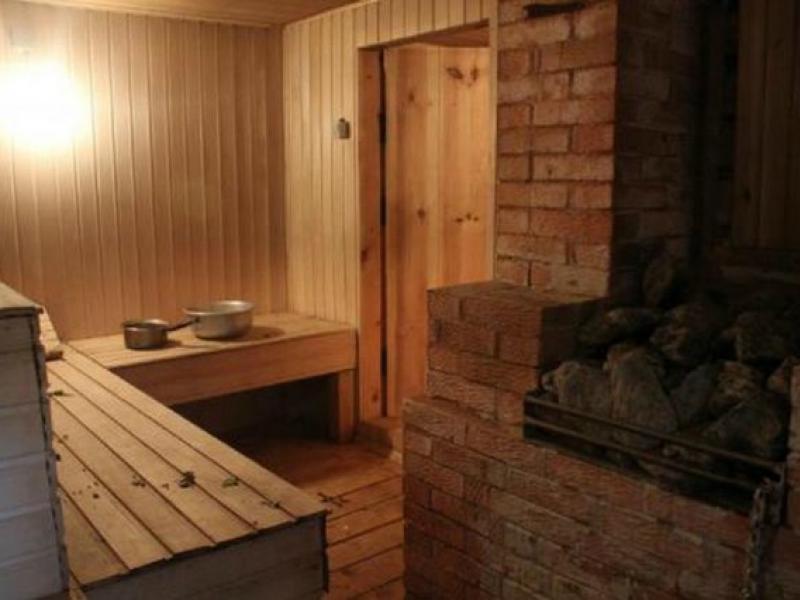
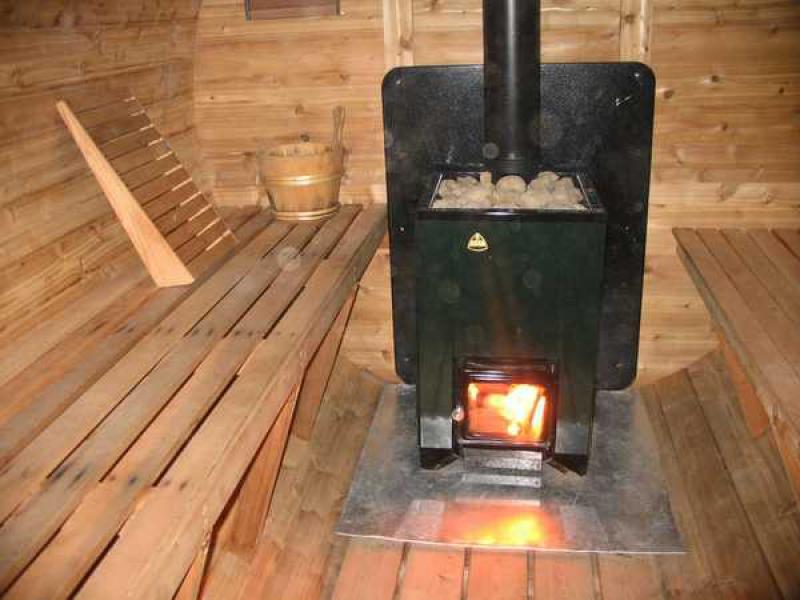

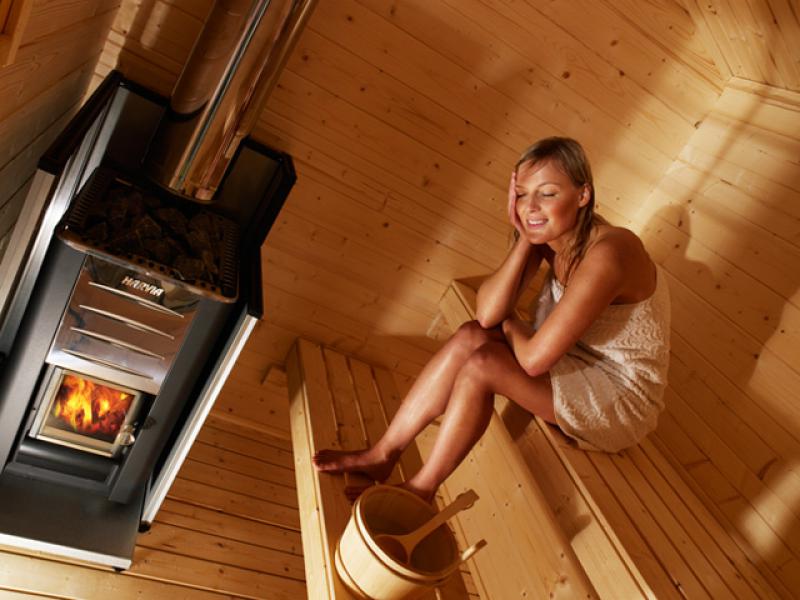
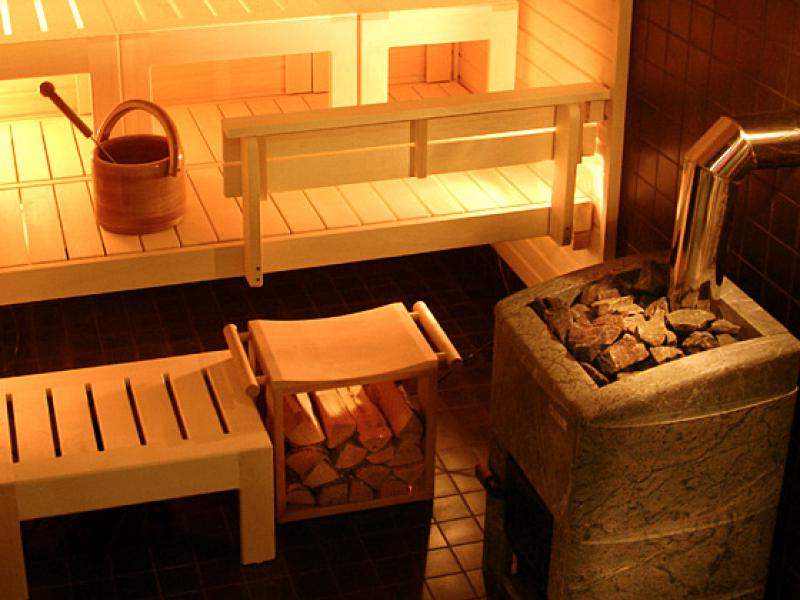

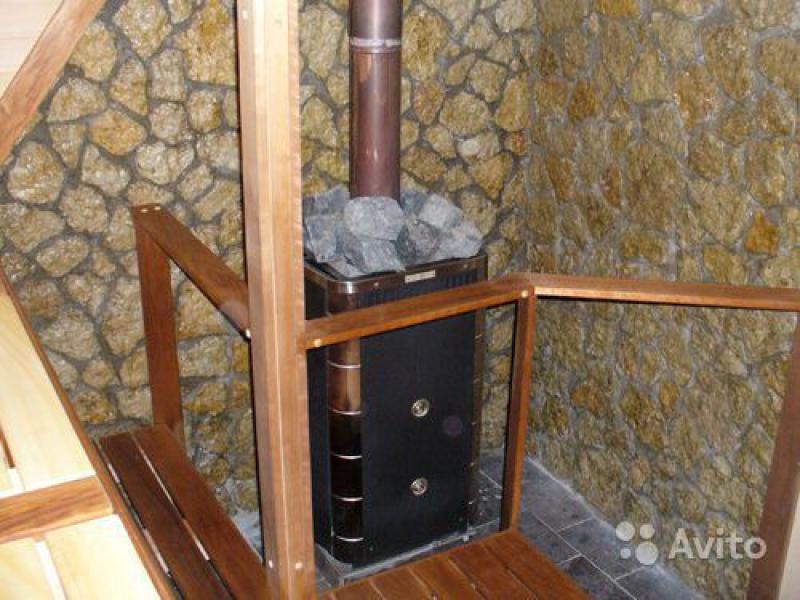
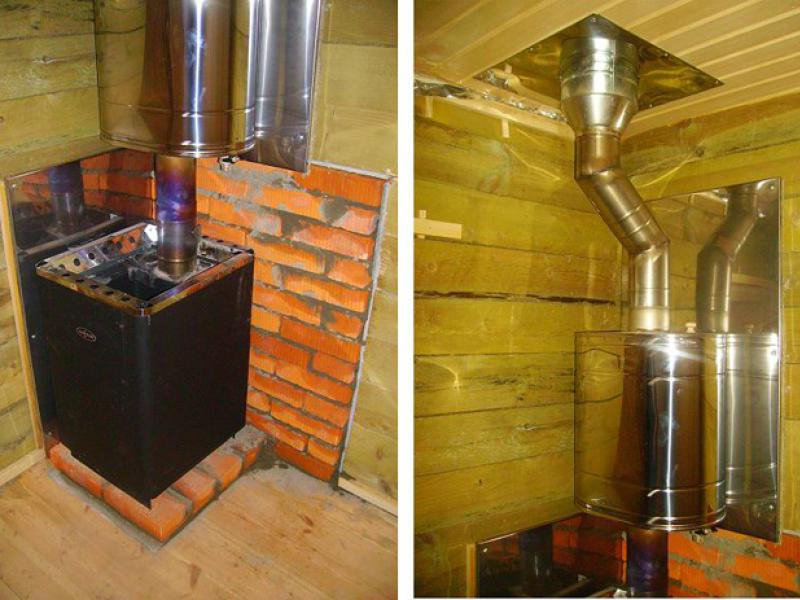

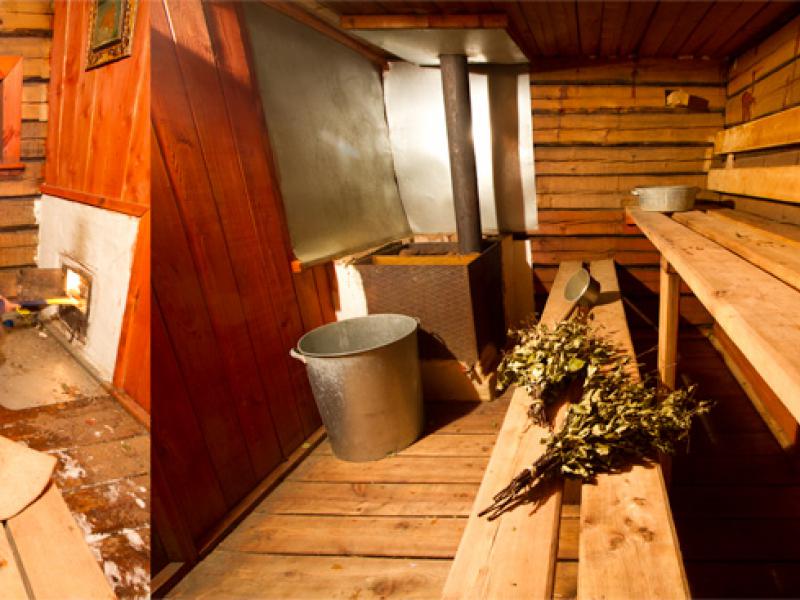
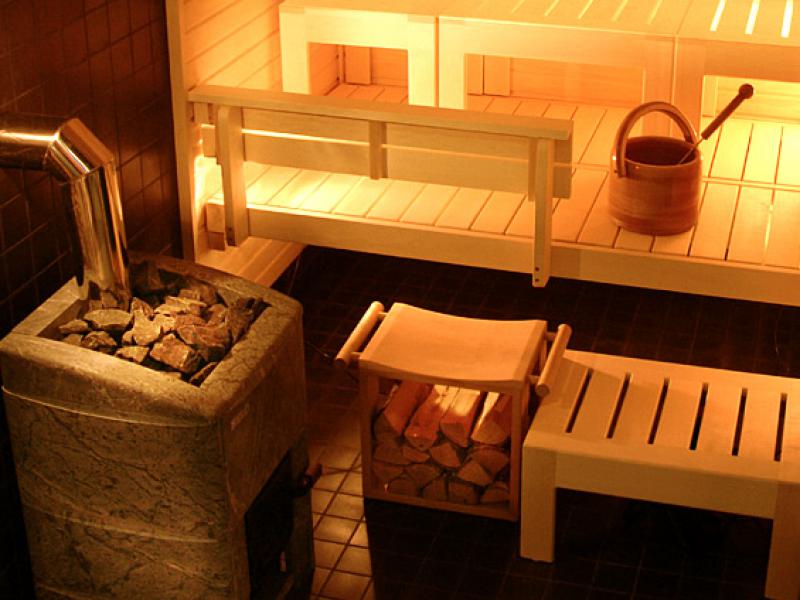
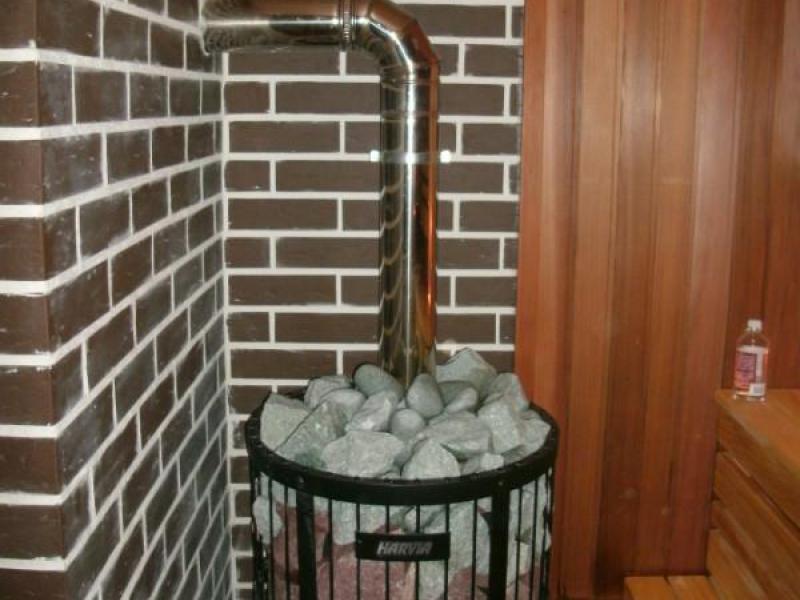
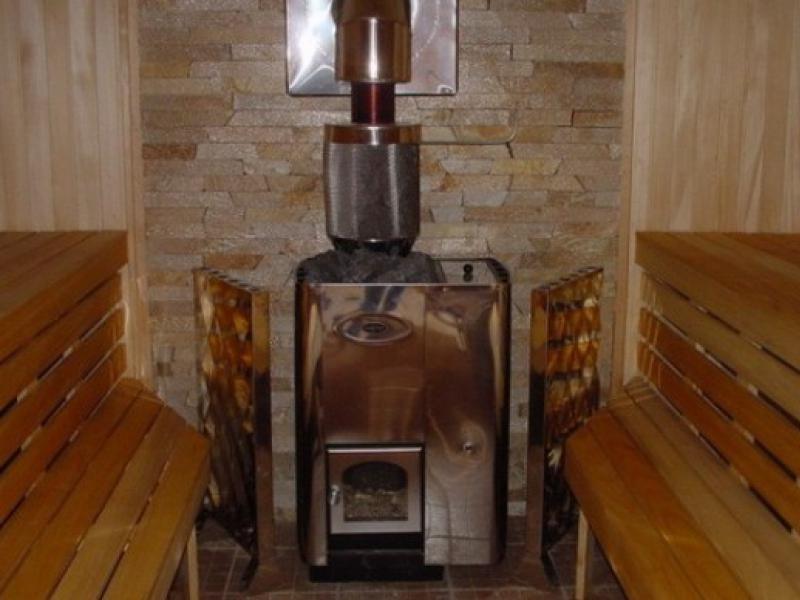

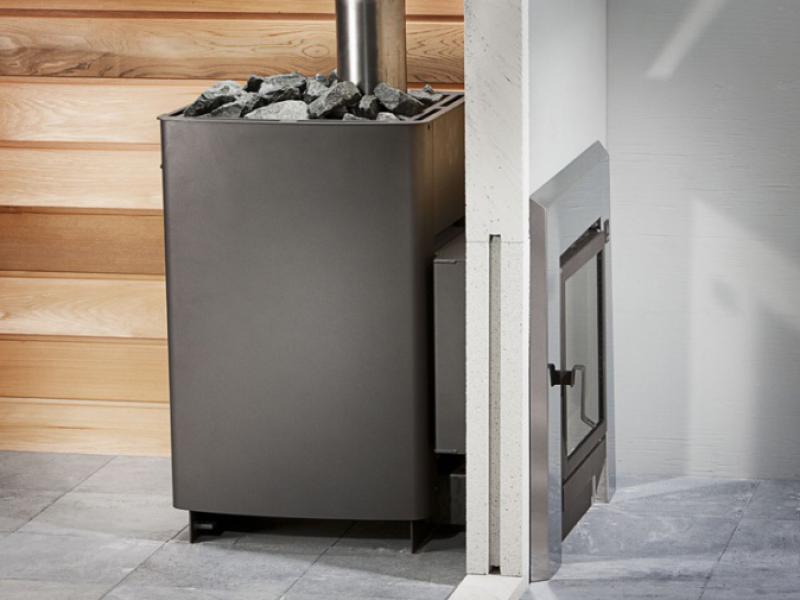
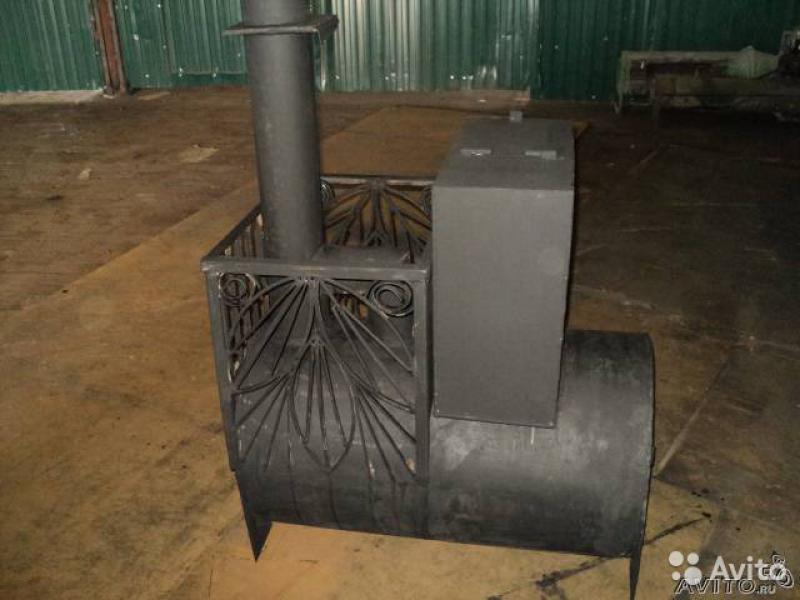
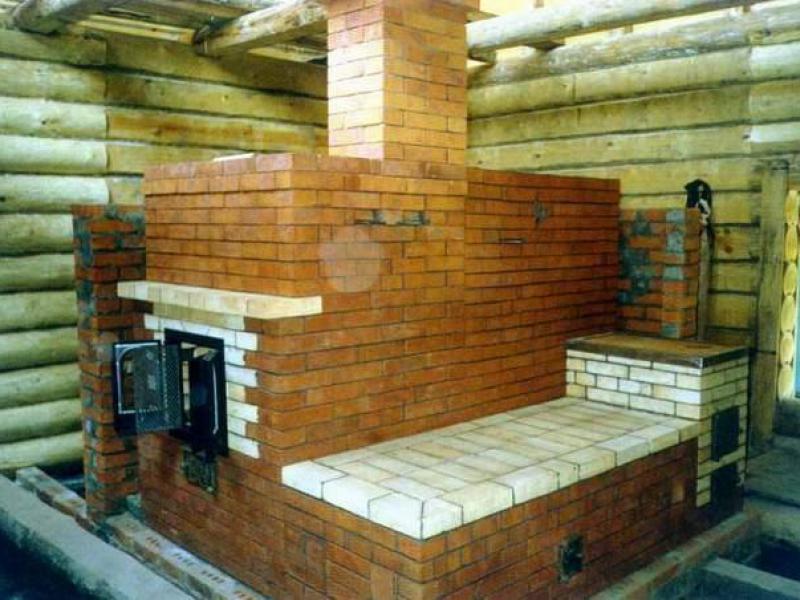
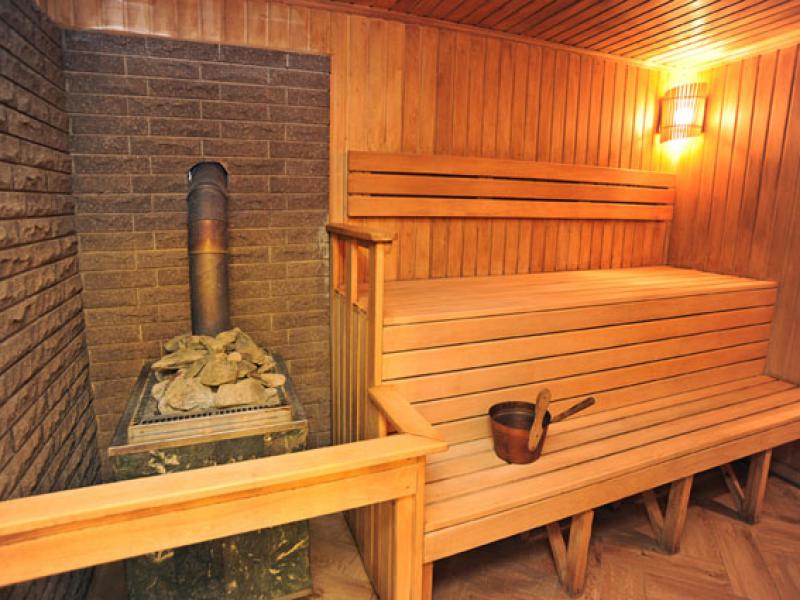
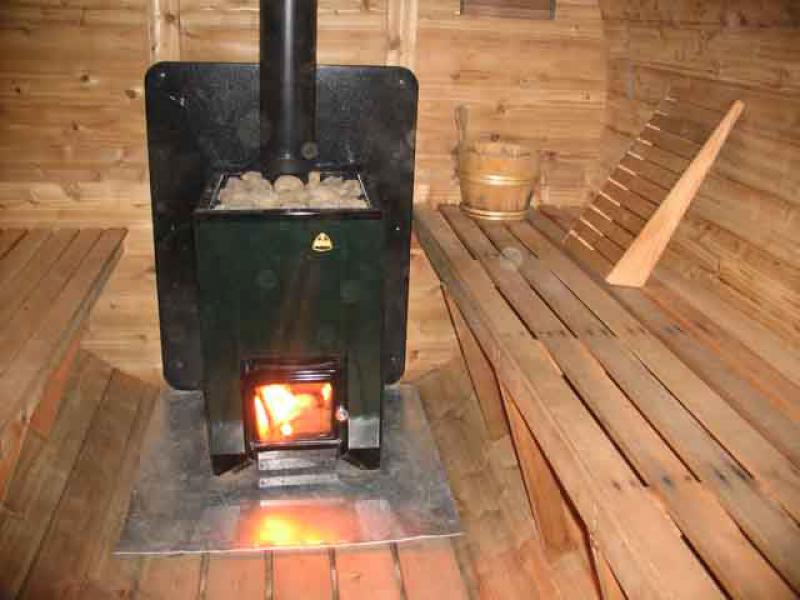
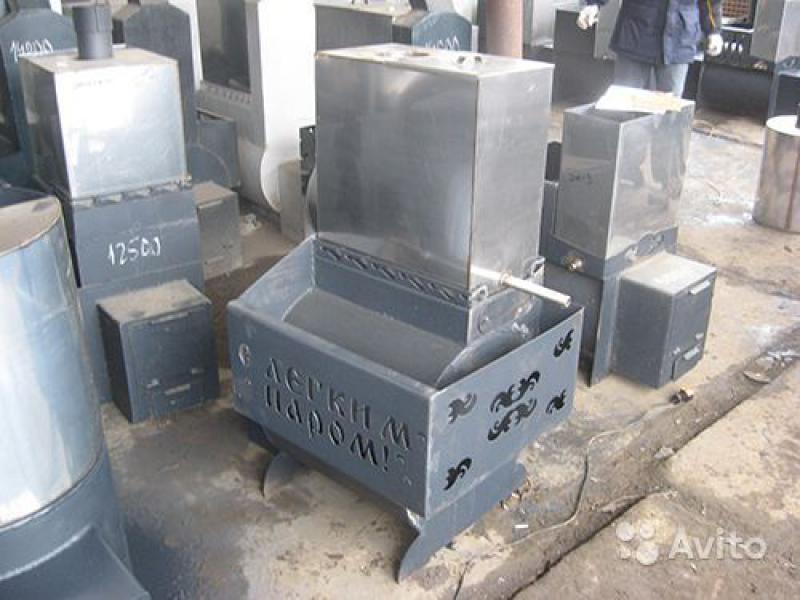
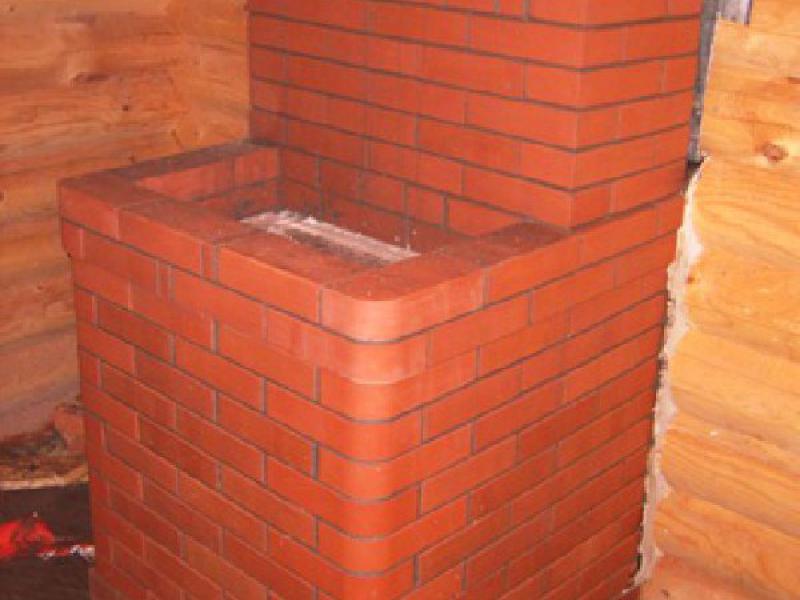

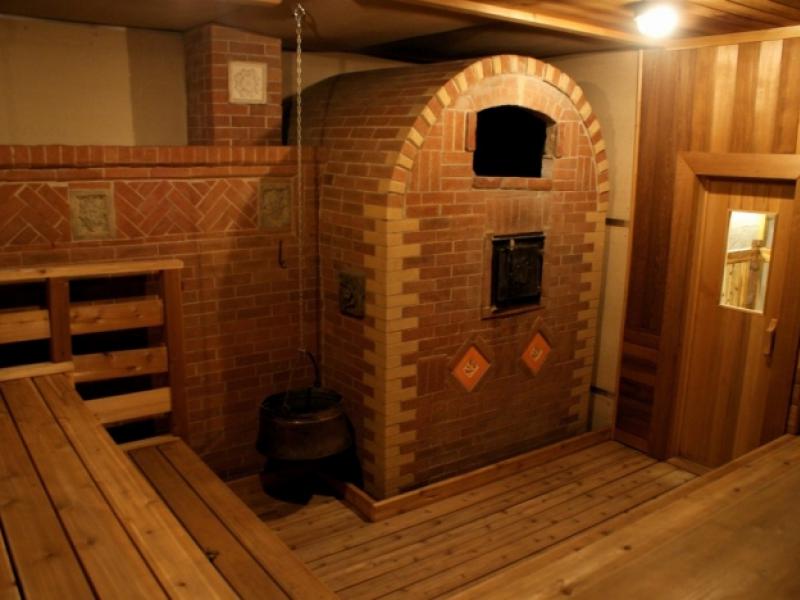
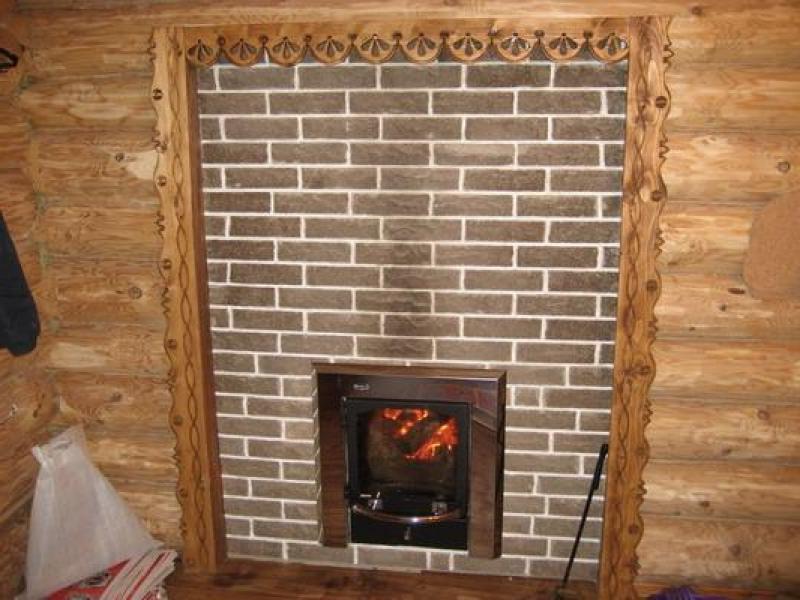
Benefits of wood-burning stoves
Wood-burning stoves in saunas are very popular and there is an explanation for this:
- this type of stove can be installed anywhere and heated at any time. It works autonomously and does not depend on the power supply. Thus, you should not be afraid of interruptions in the supply of electricity. This is especially true for baths in summer cottages. After all, firewood can be found there without any problems;
- Sauna firewood can be purchased without any problems. In addition, their prices are reasonable. It should be noted that firewood for the bath must be chosen only well dried. This is the only way to achieve the effect of a healthy sauna climate;
- a wood-burning stove heats stones faster;
- the firewood used in the sauna is an ecological fuel;
- firewood burned out and smoldering in the bath retains heat for a long time. If the bath is heated with wood, then the heat can be kept up to 14 hours. This effect is achieved due to the fact that the stove is made of bricks which cools down for a long time.
Varieties of ovens
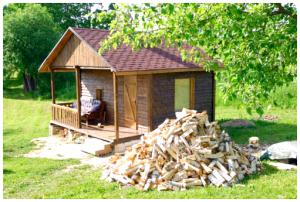 When building a sauna, the question necessarily arises, which stove to put: brick, steel, cast iron. Before drawing conclusions, it is necessary to analyze all the pros and cons. Also, many have a problem with storing firewood, which should be enough for at least the winter.
When building a sauna, the question necessarily arises, which stove to put: brick, steel, cast iron. Before drawing conclusions, it is necessary to analyze all the pros and cons. Also, many have a problem with storing firewood, which should be enough for at least the winter.
There are several oven options that need to be considered separately:
- Steel furnace. Made from sheet steel. The positive feature is affordable price... And here negative point is that such the oven heats up quickly and cools down quickly. If someone thinks that by buying a steel stove you can save money, then this is not the case. Having saved on cost, you will have to fork out for wood.
- Cast iron stove. This stove should not be installed in saunas. Since cast iron is a brittle material and does not tolerate sudden changes in temperature. For example, if you splash cold water on it while heating the stove, then cracks may appear in it, which will not allow using it further. This is a big disadvantage. At the same time, cast iron is a material that heats up quickly and keeps heat in the bath for a long time.
- Brick oven. In order to warm up such a structure, you will need a lot of firewood. Such a structure takes a long time to cool. In such a bath it will always be hot and you will not have to add more firewood. It should be noted that making a brick oven is not the same simple task... And if you have no experience, you will have to invite a specialist. The sauna stove has a special design. It must be performed according to a certain scheme. Before starting masonry work, it is necessary to select a heat-resistant solution and follow the rules.
Metal furnace structure
Steel and cast iron buildings have the same structure. Thus, their installation can be done in 2 ways, it all depends on the design:
- the firebox is in the dressing room, and the heater is in the steam room;
- the firebox and heater are located in the sauna room.
It should be noted that the first option is the most successful. Because you can accidentally burn yourself in the steam room on the firebox door. A water tank is also installed there.
Construction of a metal wood burning stove:
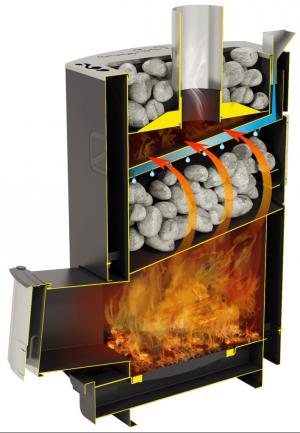
It should be noted that before installing a metal stove, it is necessary to prepare a place. It should be non-combustible, made of bricks or ceramic tiles. Also there there must be a brick wall, into which the combustion channel is installed.
Brick kiln design
This type of building can be either massive or neat. This will depend on the room in which the installation is supposed to be. It can also be installed in 2 ways - a firebox in dressing rooms or in a steam room. In this case, the stove can become part of the wall.
There is an installation option when the tank is installed on top of the combustion chamber. What you need to do to install:
- build a foundation in a pit, strengthen with reinforcement. The foundation should be 10-15 cm larger than the base of the furnace;
- insulate the wall with an asbestos sheet or heat-resistant drywall. It is necessary to resort to this procedure if the stove is not installed in the wall;
- roofing material is cut out to the size of the foundation and laid on it;
- the laying of the stove is carried out on top of the waterproofing. Laying begins in a sequential pattern, which must correspond to the selected model.
- when laying out the stove, it is necessary to control its evenness. For this, a level and a plumb line are used;
- when installing the door, it must be secured with steel wire. Often it is propped up with a brick, which is removed after the doors are well secured by masonry;
- the grate is installed on strips of asbestos;
- the heater is brought out into the steam room.
In the end, I would like to add that a brick oven must be erected only from high-quality material and with a properly selected heat-resistant material.
The compact sauna stove of the Russian manufacturer "Termofor" is designed for heating small steam rooms and adjacent rooms with a volume of up to 12 m 3.
The product is designed in terracotta color. This modification differs from other models in the absence of a built-in water tank.
Made of refractory steel, the furnace is heat resistant and durable. She quickly warms up the air, while using a low consumption of firewood.
The maximum amount of loaded stones is up to 30 kg. Sauna stove Termofor Compact terracotta has a width of 415 mm, depths of 730 mm and a height of 690 mm.
The sauna stove Termofor Compact terracotta is an excellent budget option for a family steam room. Its cost reaches 7999 rubles.
The wood-burning stove for a bath Rus 9 from the Russian manufacturer "Teplodar" is designed for use in small rooms, the volume of which does not exceed 9 m 3.
Its peculiarity lies in the ventilated heater. This structure of the tank allows you to heat up the air as quickly as possible and not humidify it.
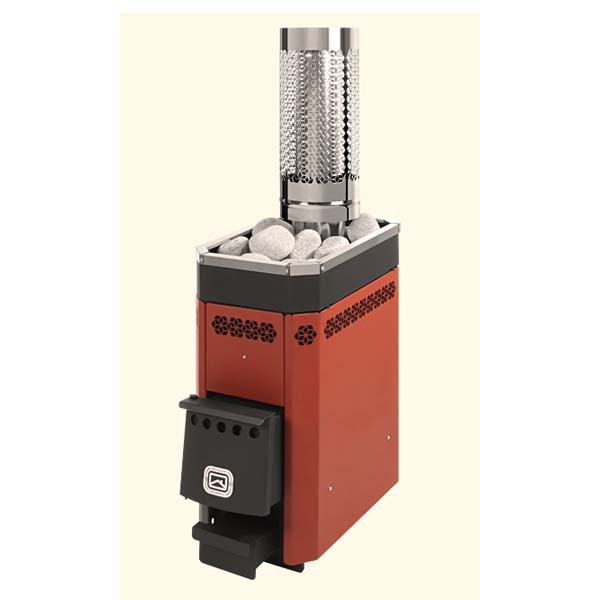
This modification differs from Rus9U in the presence of a combustion channel, which allows you to heat the stove from a dressing room or an adjacent room.
The firebox body is made of refractory chrome steel. Its dimensions: width 308 mm, length 470 mm, height 672 mm.
The special design of the bottom of the compartment for stones, the maximum load of which does not exceed 25 kg, minimizes the load on the chimney header. This eliminates the deformation process.
Teplodar Rus 9 is an excellent budget option for a Finnish sauna. Its cost is 8180 rubles.
The electric sauna stove Harvia Trendi KIP-45T from the Finnish manufacturer Harvia is designed for use in small rooms with a volume of up to 6 m 3.
It is wall-mounted. Despite its compactness (width 410 mm, depth 280 mm, height 600 mm), this model perfectly heats the sauna and keeps it warm for a long time.
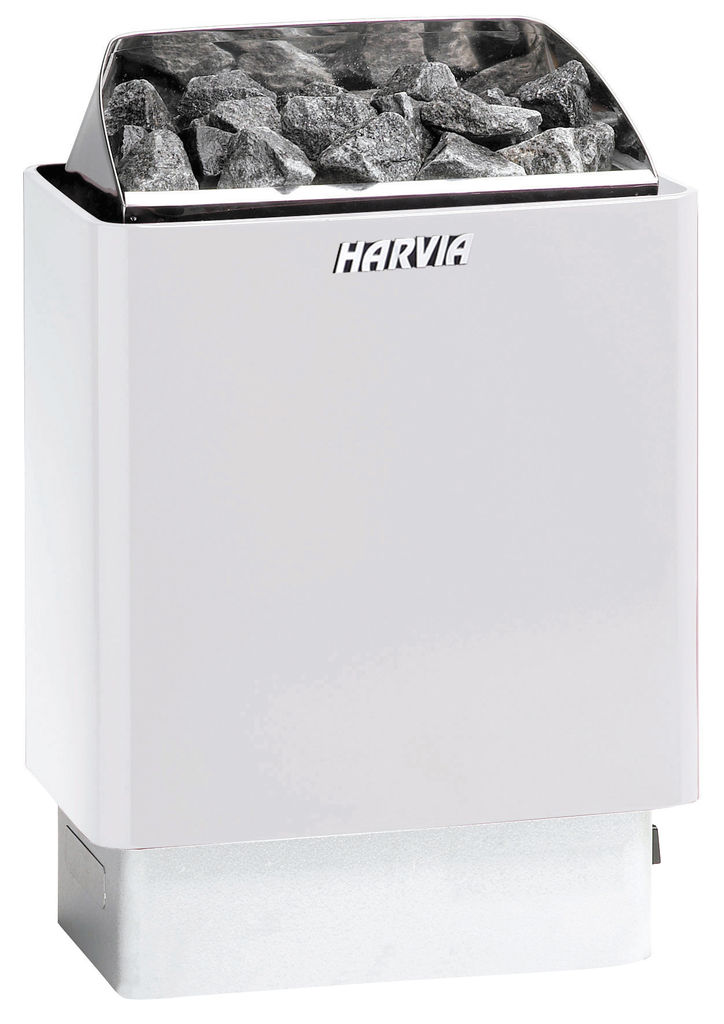
Its peculiarity lies in the improved compartment for stones. It allows you to stack large stones weighing up to 20 kg, which, in turn, ensure optimal heat dissipation.
At the same time, the case temperature remains low.
The furnace is made of refractory materials. It is equipped with a control panel capable of regulating the temperature up to +95 0 C. The cost of an electric heater is 6090 rubles.
The compact solid-fuel stove for the Ermak 12 bathhouse was created by the Russian company Ermak-Thermo. It is designed for heating baths and saunas up to 12 m 3.
The stove has an open stove-mesh on the back wall and outlet to the side wall. This furnace model is made of refractory steel (for comparison, the Ermak-Elite model is made of stainless steel) and does not have a water tank.
Design features:
- modifiable functionality allowing 6 different options;
- self-cooled handle;
- reversible door;
- the location of the chimney in the center.
Despite the small dimensions of the body (height - 690 mm, depth - 520 mm, width - 425 mm) and a sufficiently deep firebox, the stove has an attractive design.
It is made of structural steel, has a rigid structure and an advanced heat transfer system. The cost of the product is 8900 rubles.
Fifth place: Narvi NM 450 oven
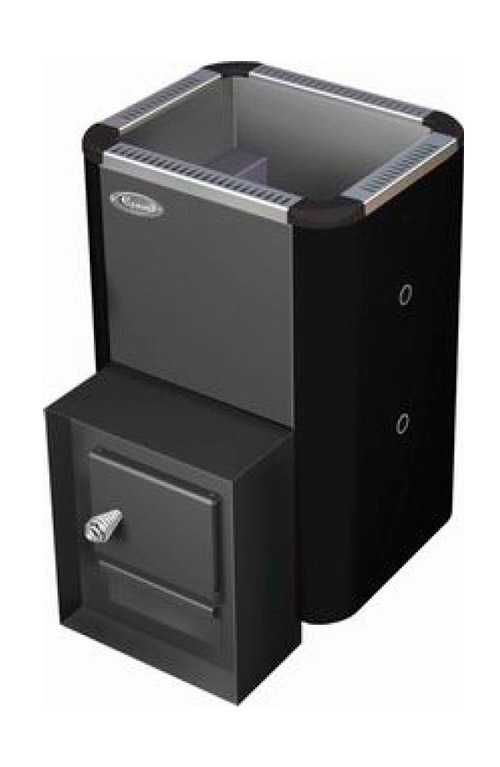
The electric stove for baths and saunas Narvi NM 450 from the Finnish company Narvi is distinguished by its elegant and modern design, as well as an abundance of colors.
This allows you to successfully fit into a small interior of a steam room with a volume of up to 8m 3. The wall-mounted oven is easy to install and operate.
The body of the electric sauna heater, which has a height of 580 mm, a width of 430 mm, a depth of 280 mm, is made of stainless steel. A distinctive feature of the stove is a large stone container with a capacity of up to 30 kg.
This allows the room to have good steam. Another advantage is the location of the control devices, which can be installed during installation from either side - to the left or to the right.
The cost of an electric furnace is 8580 rubles.
Sixth place: Termofor Shilka terracotta
Solid fuel stove for a bath Shilka terracotta from the Russian company "Termofor" is intended for heating small saunas and baths with a volume of up to 12 m 3.
The range of the stove is distinguished by the terracotta color of the convector casing, which allows it to harmoniously fit into the interior of the room. The modification of this model is distinguished by the absence of a built-in tank.

Furnace features:
- central location of the chimney;
- deep non-ventilated heater (730 mm);
- small dimensions (width 415 mm, height 690 mm, length 130 mm).
The stove is made of heat-resistant steel and is more aimed at creating a Russian bath regime. The maximum loading of stones is 30 kg.
This is a great option for those looking to create a high percentage of heat from stones. The cost of the product is 8700 rubles.
Seventh place: Harvia Vega Compact BC23
The electric sauna stove Vega Compact BC23 of the Finnish manufacturer Harvia is designed for small saunas with a capacity of 1-2 people (the volume of the steam room is up to 4m 3).
It is a compact yet powerful oven (2.3 kW). Its height reaches 505 mm, width - 280 mm, depth - 295 mm, stove capacity - up to 12 kg of stones.
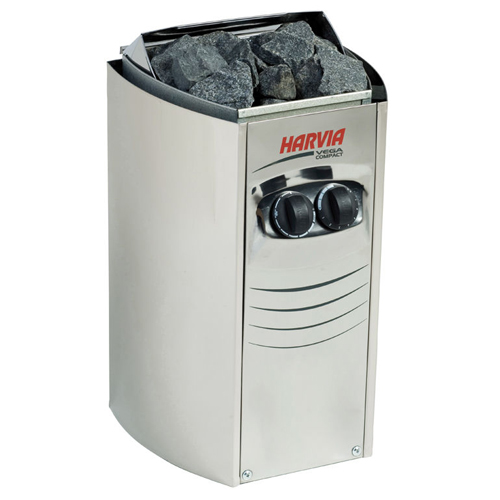
Unlike other models, this modification has a built-in control panel, the switches of which are installed in the upper part of the case for convenience.
The heater is easy to use and easy to install. It is installed at the bottom of the wall on the bracket and fixed with one screw.
The furnace body is made of stainless steel, which ensures a long service life. A highly functional sauna stove costs 6,250 rubles.
Eighth place: Vesuvius Skif 12 HF
The wood-burning stove for a bath Skif 23 VCh is produced by the Moscow company PTK Vesuviy LLC.
In appearance, it is a small open heater with a remote tunnel, which is fenced around the entire perimeter with a metal mesh for stones. The stove is designed for small rooms with a volume of up to 14 m 3.

A distinctive feature of this modification from other models is a remote fuel tank.
This allows you to install it so that you can heat the stove from an adjacent room. As a result of this installation, the steam room and the dressing room are heated.
The casing-grid of the furnace holds about 100 kg of stones. It allows you to use various stones in the steam room, differing in color, heat capacity and healing properties.
The ergonomic design of the model allows you to install the stove anywhere in the bath. The cost of the product is 9 880 rubles.
Ninth place: Harvia WKM16 wood-burning stove
The Finnish sauna heater Harvia WKM16 from the HARVIA company is designed for heating rooms up to 13 m 3.
With its classic design, this wood-burning stove makes steam bathing a real pleasure. It distributes heat evenly and ensures proper air circulation.
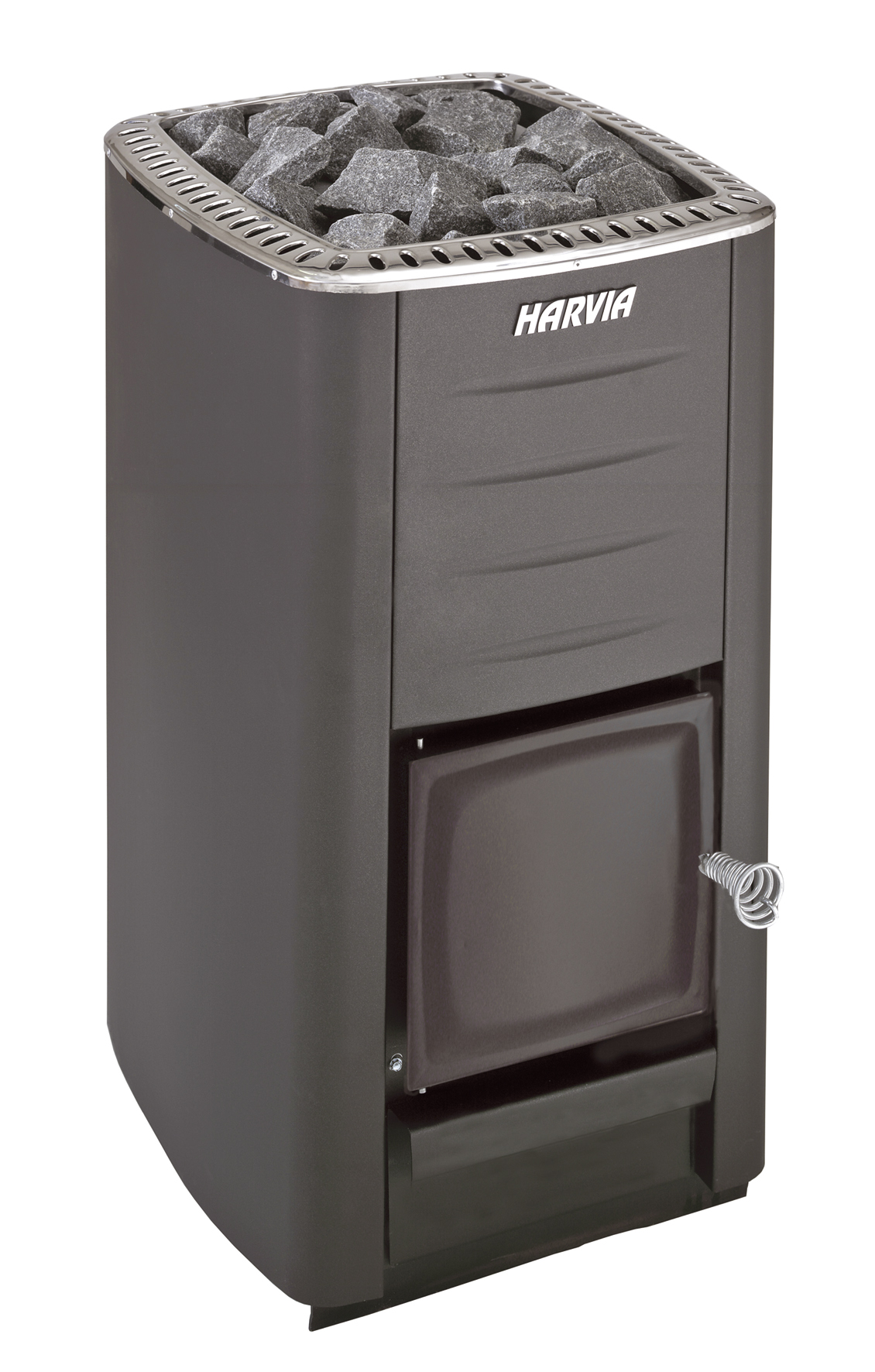
This modification differs from other models by a door with heat-resistant glass, which allows you to observe the reflections of the flame. In addition, it does not have a built-in tank and a remote fuel channel.
A graphite-colored convection-type furnace with stainless steel edging with dimensions of 390x710x430 mm (width x height x depth) is made of refractory materials.
The maximum weight of the stones to be laid is 30 kg. The cost of the product is 9500 rubles.
Tenth place: Oven Cuirassier 10 standard
The wood-burning stove for the Kirasir 10 standard bath is designed for use in rooms with a volume of up to 12 m 3. It is produced at the Novosibirsk plant "Technotrade" (Russia) under the Greivari trademark.
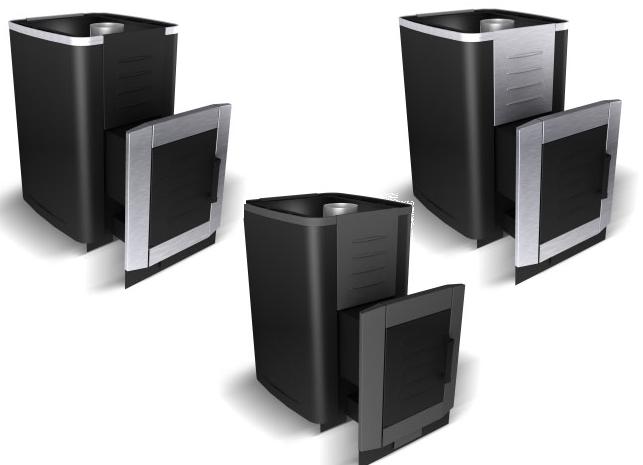
This modification of the stove differs from other models in the absence of a built-in water tank, a glass door and a heat exchanger.
Features of this sauna stove:
- remote fuel tank;
- decorative frame of the firebox made of stainless steel;
- metal blind door;
- small volume (height 690 mm, width 425 mm, depth 478 mm);
- curved sidewalls.
Despite its small size, the stove provides light steam and rapid heating of the room. The deep heater is designed for stones up to 45 kg. The cost of the product is 9550 rubles.
There are quite a few heat generators that are designed to be installed in a steam room. Their fundamental difference is in the consumed fuel. Each type of stove has both advantages and certain disadvantages. But if we consider all engineering solutions in a complex, then the best stove for a bath is one that is fired with wood.
Before dealing with its nuances, it is worth explaining that such sources of thermal energy are stationary and mobile. The first - the traditional version of a brick heater - does not make sense to consider, since not everyone can, and this is only one of the significant disadvantages. And only a specialist can make the necessary engineering calculations. But with portable stoves for a bath, since the conversation is about choosing the best option, it is worth understanding in more detail.
The range of such stoves is quite impressive, but are all their characteristics and properties crucial? Let's leave aside such indicators as appearance(design) of the heater, its shape, height of the legs and a number of others, and we focus on the most important parameters that will help you choose a good stove for a wood-fired sauna.
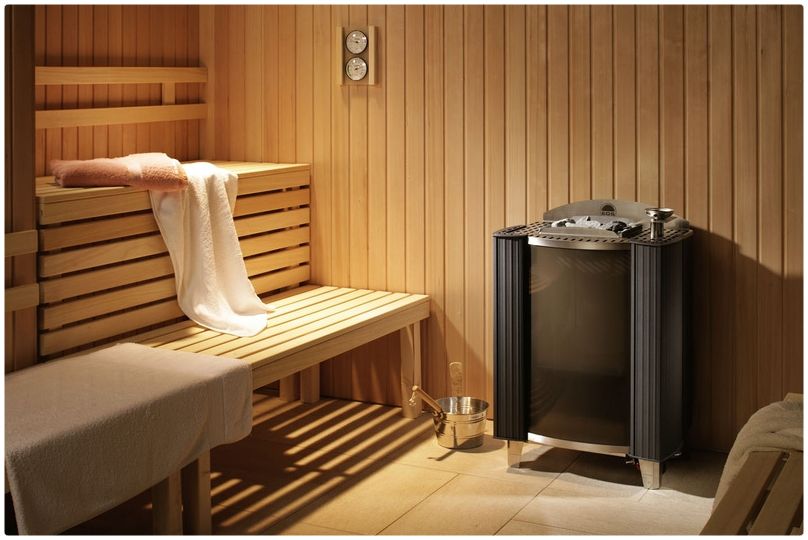
For those who don't know! Sauna stoves are called stoves, not because they were traditionally laid out of bricks, but for the reason that the stones, which are a little lower, are the sources of heat.
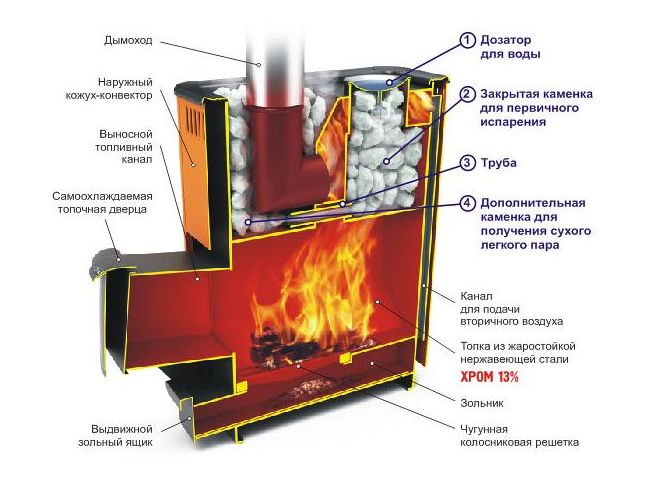
The main criteria for choosing a wood-burning stove
Power
Thermal is meant. There is no point in explaining that it should correspond to the dimensions of the room. If you take a model with a lower than required parameter, then no matter how much you drown it, there will be no sense from such procedures. Well, an oven that is too powerful will not only overheat the air, but will also significantly reduce the service life of all materials - both construction and finishing materials, and it will not work for long in a limited space.
If we take the average power / volume ratio, it looks like this - 1 kW / 1 "cube" of the room... But this proportion is approximate, since the interior decoration is made with various materials. Plus, a lot depends on the quality of the steam room insulation. In order not to be mistaken, experts advise increasing the obtained calculated value by at least ⅓.
Heater type
Closed - creates a relatively low temperature, as a result of which the so-called "soft" steam is obtained in the steam room (stones are covered with a lid). Such procedures are suitable for almost everyone.
Open - such a stove is able to warm up the steam room faster and stronger, but at the same time it significantly dries the air. For some categories of people, there are contraindications, since these conditions for the body are in some way stress.
Firebox type
The remote version is preferable for many bath lovers, since laying firewood, cleaning the combustion chamber is done from another room.
What else to pay attention to
- The presence of a reservoir for water, which is heated during the heating. This model is convenient for those baths where a separate DHW circuit is not provided.
- Door type. This element, made of heat-resistant glass, allows you to observe the burning logs. It has a calming effect on nervous system, and many lovers of bath procedures prefer to install just such heaters.
- Case execution. The simplest option is thick sheet metal. Plus - a low price. The downside is the increased risk of getting burned. It is preferable to have a stove with a "multilayer" body (a kind of thermos). In such designs, the surface does not get too hot. Well, models finished on top, for example, with tiles, are more expensive. But in this case, this does not affect the quality of functioning. In fact, you will have to pay extra only for the appearance. Although there is an opinion that the heat energy from such heaters is distributed over the volume of the room more rationally (evenly).
- Loading volume of stones. The higher this indicator, the longer the stove will maintain the desired temperature with the same fuel (firewood) consumption.
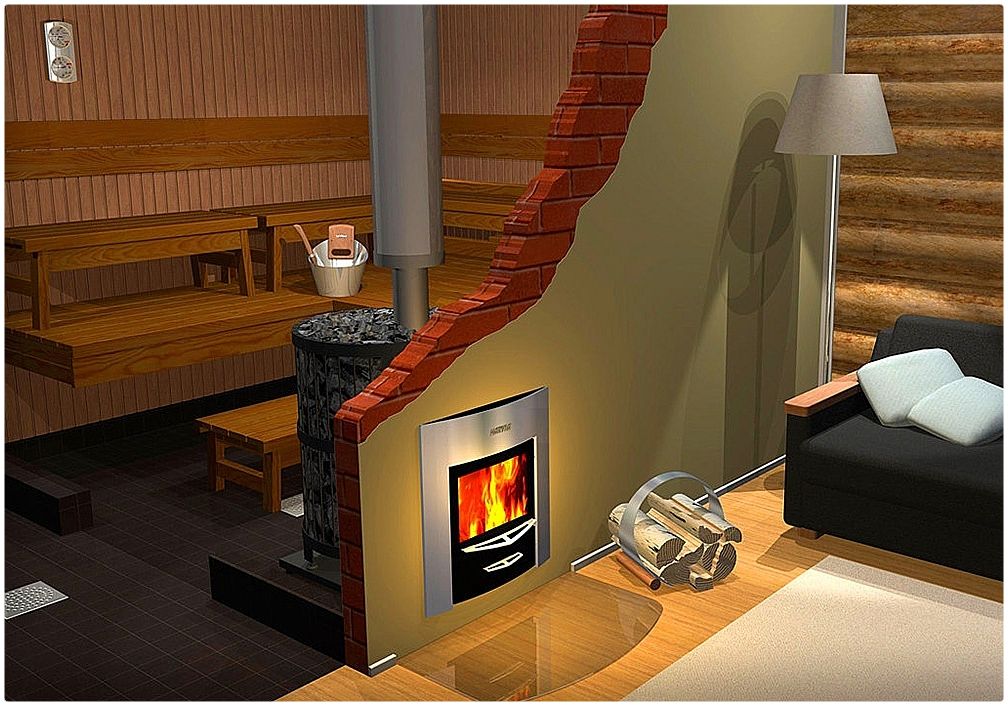
A little about stones
Correct a priori does not mean that the desired effect will be obtained from her work. Rationale - Not every stone is suitable for use as a battery and secondary heat source.
What to consider
- The best shape for a stone is round. But this is the ideal. In practice, you should pay attention (and select) samples with a rounded contour. They ensure optimal circulation of air masses.
- Pores, microcracks are the reason for rejection. Such stones are easily destroyed by high thermal exposure. There are frequent cases when they literally exploded, “fired”, and the fragments flew in all directions.
- The recommended size of fractions is within 5 - 6 cm.
- The best are considered talcochlorite, jadeite, gabbro-diabase, large river pebbles.
Manufacturers at a glance
Given the popularity of heaters, many organizations are engaged in their manufacture. But, unfortunately, not all of them can boast of new equipment, personnel training and adherence to technology at all stages of production. Therefore, there are low-grade models on the market, which not only will not provide the desired effect, but also will not last long. In order not to "run into", you need to navigate who you can trust unconditionally. As an example - the most popular brands.
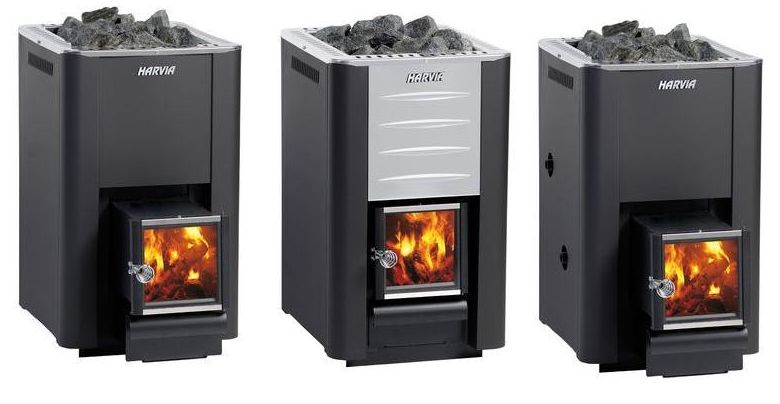
Foreign
Finnish "Harvia", "Kastor", "Helo" (the latter are attractive for a lower cost). A common feature of such models is economical fuel consumption.
Price - from 21 800 rubles.
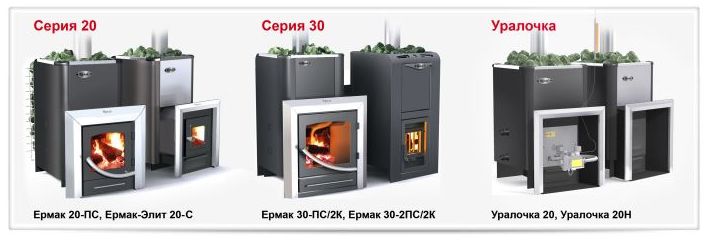
Domestic
According to users and experts, products under the brands "Termofor", "Sukhovey", "Ermak", "Vulkan" and a number of other brands are no worse than advertised imported products.
Price - from 8 850 rubles.
On a note!
The stoves in question are fired with wood - this is understandable. But what kind of wood to choose, you should know. During the combustion of conifers, soot is intensively deposited on the inner walls of the chimney, and this complicates the maintenance of the system - it has to be carried out more often, and more time is required. Experts advise to lay logs of deciduous trees in the stove, best of all - birch.
For a bath located on a personal plot, it is recommended to purchase open-type stoves. Such products are distinguished by ease of maintenance and economical fuel consumption compared to “closed” models.
In order to maintain the optimal mode in the bath, it is necessary to maintain the ratio between the volume of the room (steam room) and the number of stones that can be loaded into the corresponding compartment of the oven. You can focus on this proportion - 4.5 kg per 1 m³.
There is a widespread belief that a grate is an integral part of any stove. It is not necessary for sauna heaters. By the way, in this case, the firewood burns out completely, which saves about 18% in fuel consumption.
Periodic burning of aspen logs in the stove allows less frequent maintenance of the chimney, since this ensures the burnout of soot deposits on the inner walls of the channel.
When planning to install the stove on the wood, you should worry in advance about a reliable and efficient exhaust hood in the steam room!








